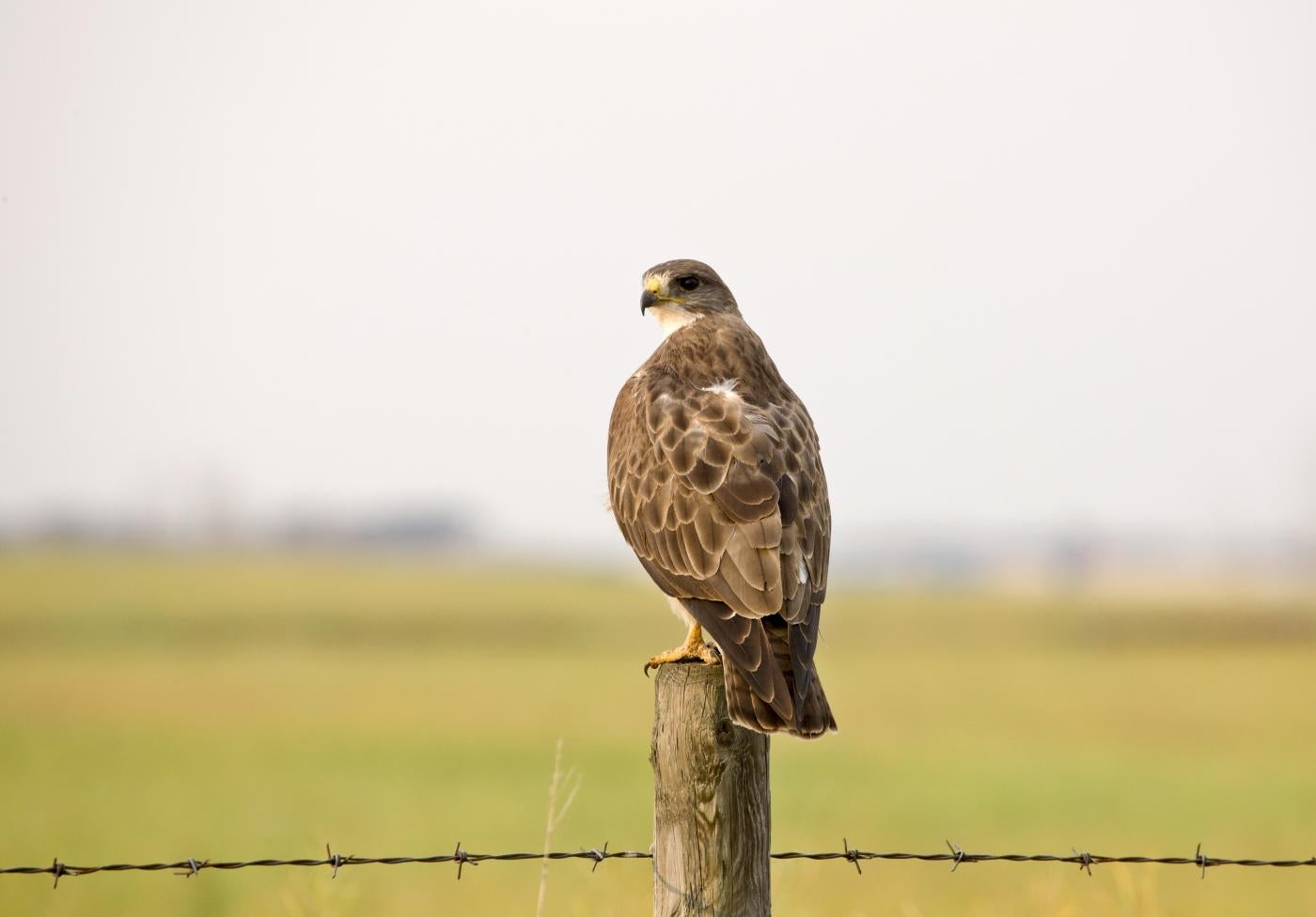Species Profile: Swainson's Hawk

The Swainson's hawk is a raptor with a thin body and narrow wings that migrates impressive distances. It weighs between 1.5 and 3 pounds (693 and 1367 grams), has a wingspan of 46 to 54 inches (117 to 137 centimeters) and is 18.9 to 22 inches (48 to 56 centimeters) in length. Nearly the entire population of Swainson's hawks migrates between breeding grounds in western North America and overwintering grounds in South America. During their journey, these hawks travel roughly 12,427 miles (20,000 kilometers) round trip, making them one of the world's longest-distance migratory raptors.
Breeding
The Swainson's hawk breeds in the grasslands of the Midwestern and Western United States. They often build nests in small groves of trees that border streams and agricultural fields. A pair of Swainson's hawks will lay a clutch of one to five eggs, which they incubate for more than a month before the eggs hatch.
The nestling hawks are very small when they hatch and too weak to even raise their heads. The parents must care for them for six weeks before the young birds are strong enough to leave the nest. While raising their young in the summer, the hawks have a varied diet. They feed on small animals, such as squirrels, gophers, voles, mice, birds, lizards, snakes and insects. They capture their prey by perching on tree tops, poles or posts, rocks, and higher ground. Then, they swoop down to catch their prey by surprise. Swainson's hawks have also been observed ambushing prey, for example, waiting outside a squirrel’s burrow for it to emerge.
Before leaving their breeding grounds to make the journey south, Swainson's hawks must prepare for their long trip. In late August and early September, they form flocks and begin to put on fat to fuel their upcoming journey. Having just finished raising their offspring, adults in particular need to put on more weight to survive the fall migration. Swainson's hawks put on fat by gorging on grasshoppers until winds from the north arrive, and the flocks take off to travel south.
Migration
Once they are in flight, the flocks use winds from the north and thermals to help them save energy while flying. Thermals are columns of air that rise right from the surface of warm patches of land. Birds use these thermals to gain height without flapping their wings as the column of air rises. As it cools, the birds glide down to another thermal and repeat the process. This pattern of following thermals allows the birds to use very little effort and energy.
Swainson's hawks rely heavily on thermals and typically avoid crossing water from which thermals rarely rise. This reliance on land masses to migrate means that almost the entire population of Swainson's hawks must funnel through the narrow land bridge between North and South America, often in massive flocks of hundreds of thousands of birds.
During their journey from North America to South America, Swainson's hawks spend little time feeding to refuel. Instead, they fast for most of the time. When they do eat, they feed exclusively on insects, such as grasshoppers, dragonflies, butterflies, moths and leaf beetles. They catch insects on the ground or in midair with their talons and can eat them while in flight.
Overwintering
Swainson's hawks spend the bulk of their nonbreeding season south of the equator in South America. To say that Swainson's hawks overwinter in South America may be a bit inaccurate, because it is summer in the Southern Hemisphere when they are there! The hawks therefore travel from summer breeding grounds in North America to summer overwintering grounds in South America. Their diet in this period is similar to their diet during migration. They almost exclusively eat insects. Their goal is to stay as healthy as possible and, especially just before returning north, to put on enough body fat to successfully migrate and raise their young.
Conserving the Swainson's Hawk
Swainson's hawks cover enormous distances each year, and they are vulnerable to threats throughout their journey, including hunting, collisions with manmade structures and poisoning from pesticides. They may also be threatened by habitat loss at both their breeding and wintering grounds.